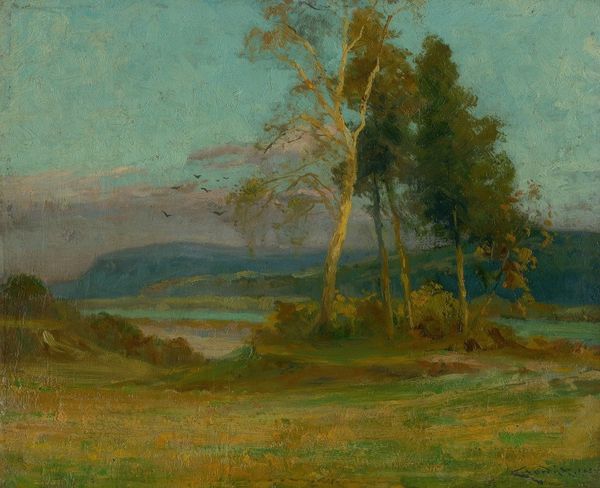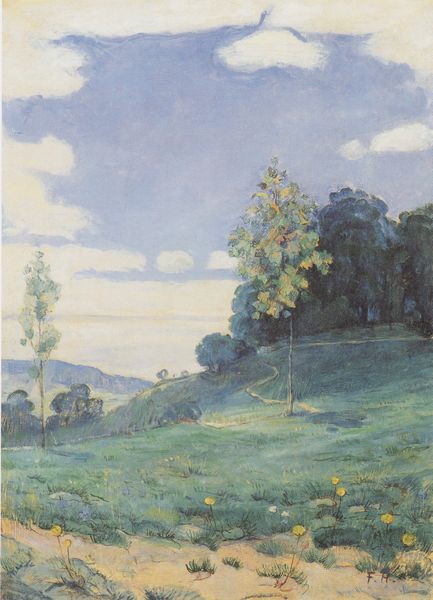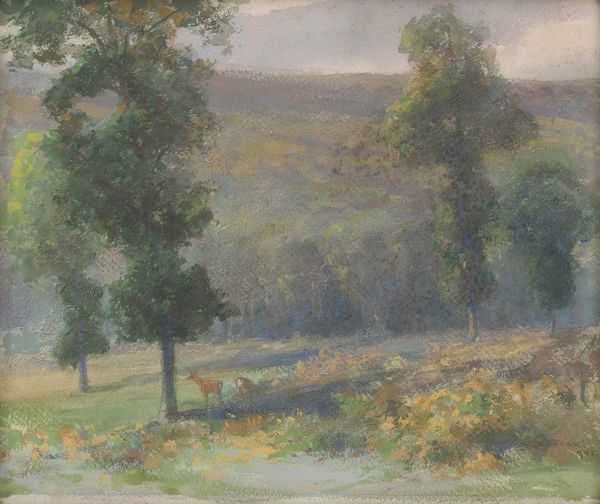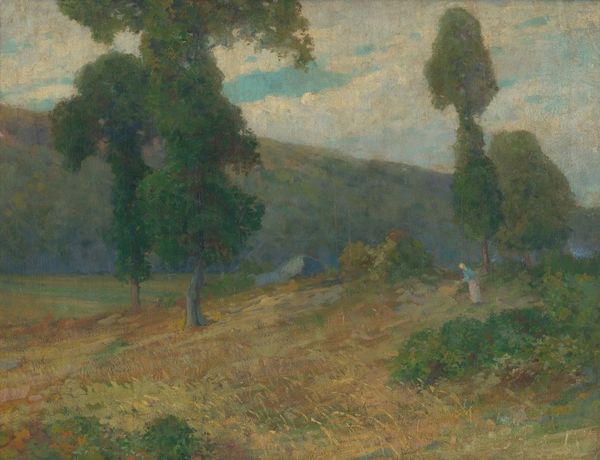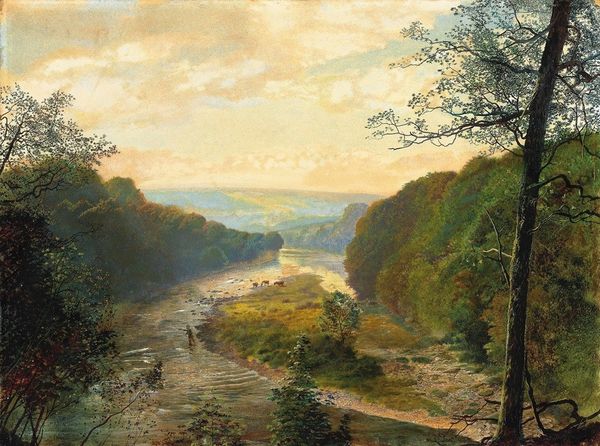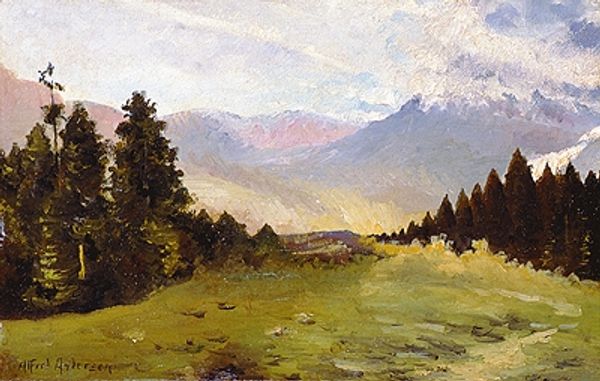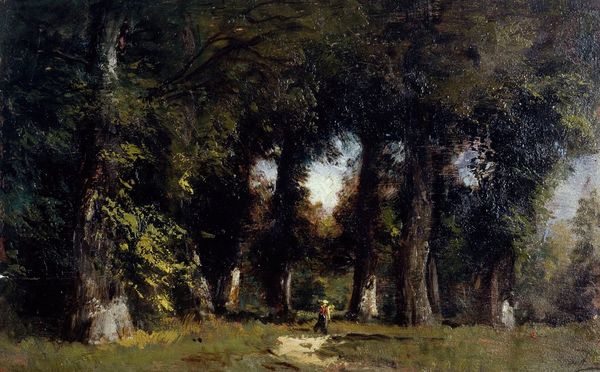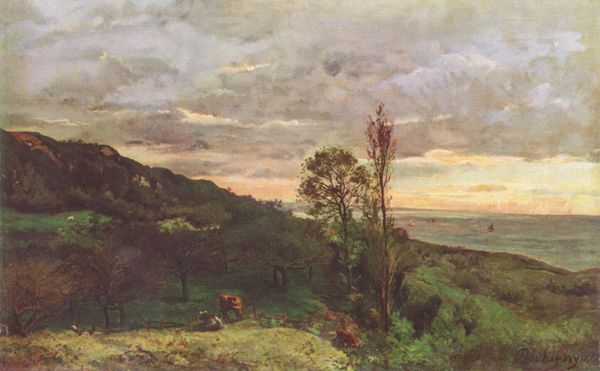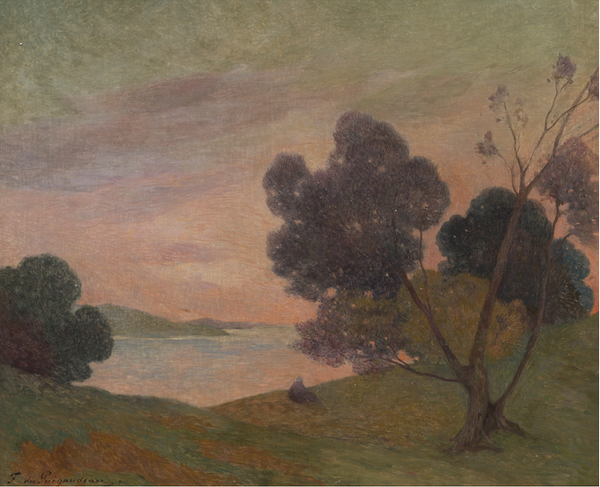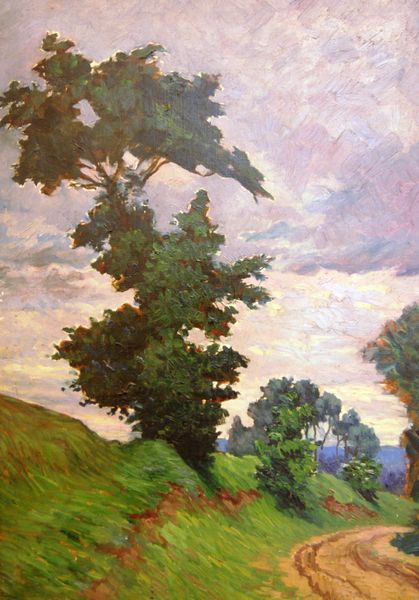
Copyright: Public domain
Editor: Here we have Eugène Jansson’s oil painting, “Vid Skogsbrynet,” created around 1900. It's quite a serene scene, very green and subdued, with hints of warmth in the sky. It makes me feel very calm, looking at it. How do you interpret this landscape? Curator: Notice how Jansson has structured the composition. The trees in the foreground act as framing devices, drawing the eye toward the softer, atmospheric perspective in the distance. Editor: I do see that now, almost like curtains opening onto a hazy world. The way the colors bleed into each other is lovely. Curator: Exactly. And observe the brushwork; it's loose and suggestive, more about capturing an overall impression rather than precise details. Jansson prioritized the feeling of light and air over meticulous representation. What do you make of the muted palette? Editor: It's definitely not vibrant. It lends a sense of melancholy or nostalgia to the piece, I think. As if you are peering into memory rather than reality. Curator: A fitting description. The restrained palette allows for subtle shifts in tone and value, creating a complex visual experience within a seemingly simple scene. Note how the structural integrity comes not from contour, but value. The values model the forms in this evocative vista. Editor: I can see how the painting prioritizes conveying atmosphere. It all boils down to these compositional choices – framing and value modeling. Thank you. Curator: My pleasure. Considering Jansson's other works, “Vid Skogsbrynet” reflects a consistent concern with spatial relationships, surface qualities, and his unique rendering of light effects.
Comments
No comments
Be the first to comment and join the conversation on the ultimate creative platform.

